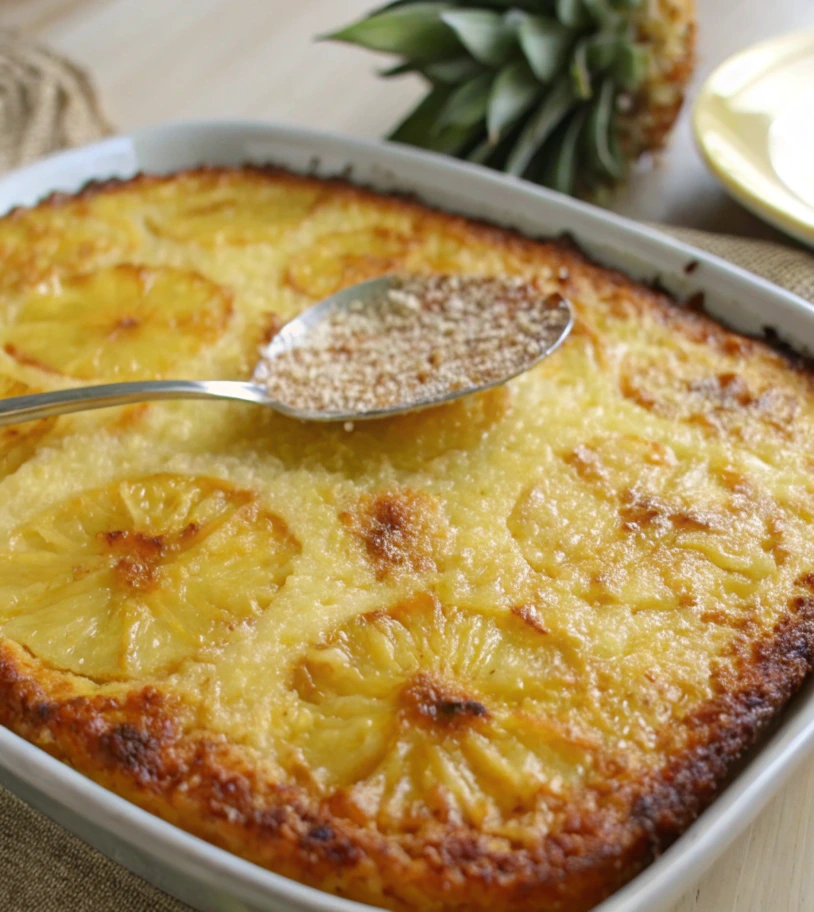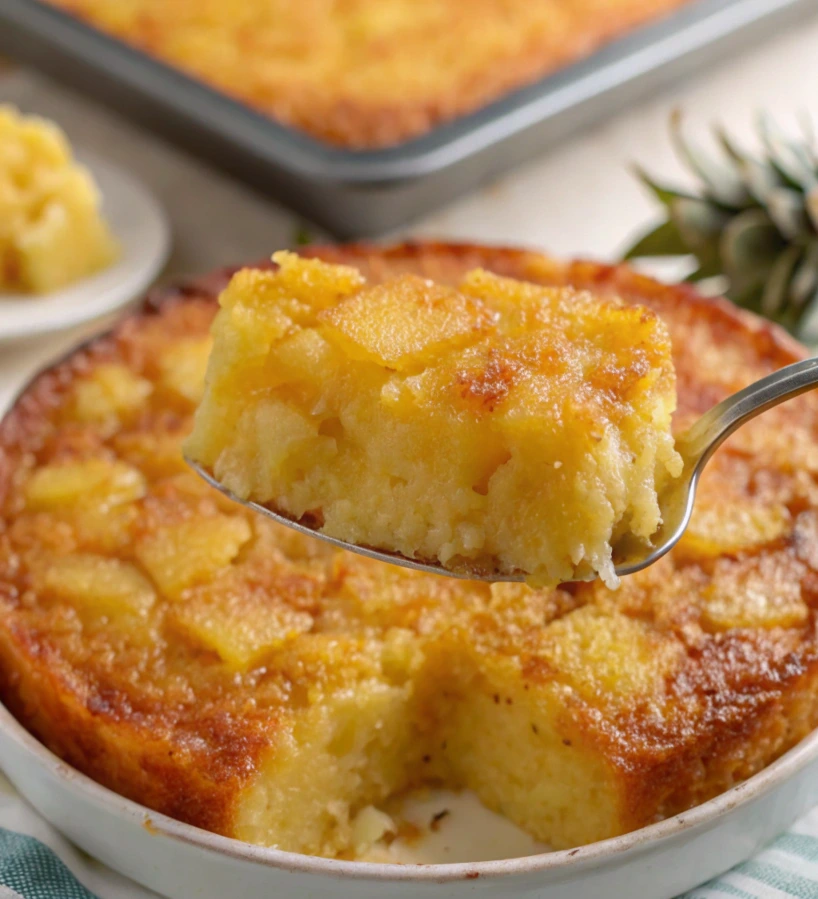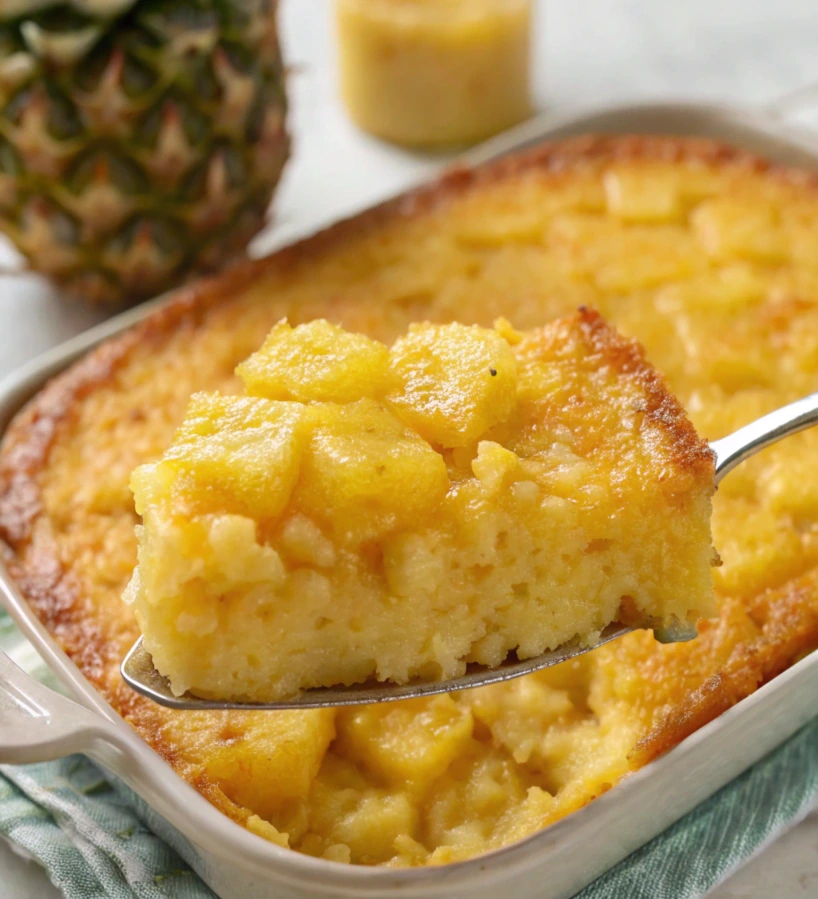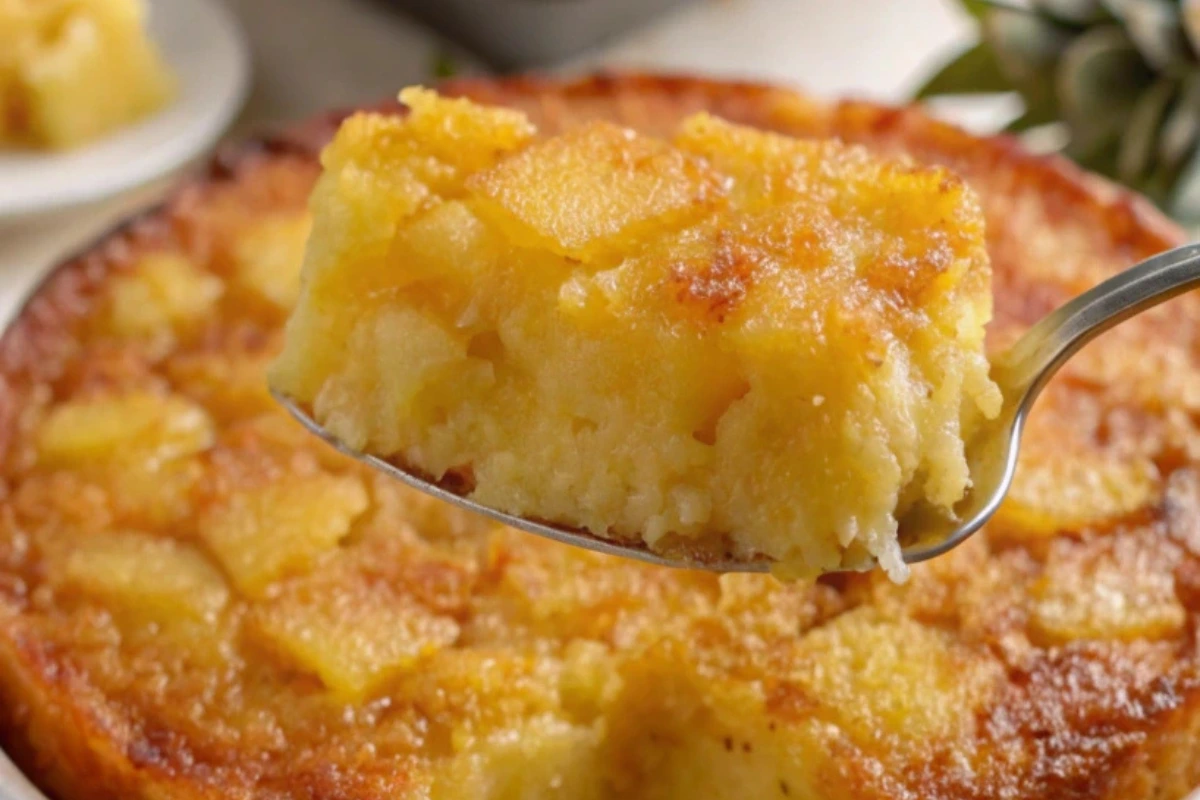What Does Pineapple Do in Baking?
Baking is both an art and a science, where every ingredient plays a crucial role in determining the texture, flavor, and overall quality of the final product. Among the versatile fruits used in baking, pineapple stands out due to its unique properties. But what does pineapple do in baking? This article explores its multifaceted benefits, from adding flavor to enhancing texture, and how it transforms simple recipes into culinary delights.

Table of contents
- What Does Pineapple Do in Baking?
- The Science Behind Pineapple in Baking
- Pineapple as a Natural Sweetener
- Pineapple’s Moisture Content
- Pineapple’s Flavor Contribution
- Pineapple as a Tenderizing Agent
- Common Baked Goods Featuring Pineapple
- Challenges of Baking with Pineapple
- Substituting Pineapple in Recipes
- Nutritional Benefits of Baking with Pineapple
- Historical Context of Pineapple in Baking
- Tips for Incorporating Pineapple in Baking
- Frequently Asked Questions about Pineapple in Baking
- What does pineapple do in baking?
- Can you bake with fresh pineapple instead of canned?
- Does pineapple flavor change during baking?
- Can pineapple be paired with other tropical fruits in baking?
- Is it better to use fresh or canned pineapple in baking?
- Can pineapple be frozen for baking later?
- Can pineapple be used in gluten-free baking?
- What are the best spices to pair with pineapple in baking?
- Conclusion
The Science Behind Pineapple in Baking
Pineapple is more than just a fruit; it’s a chemical powerhouse that interacts with other ingredients in baking. Rich in bromelain, an enzyme that breaks down proteins, pineapple contributes to both texture and tenderness.
- Bromelain can tenderize proteins in flour, making baked goods softer.
- Its acidity helps balance the pH of batter or dough, which is crucial for achieving the desired rise.
- The natural sugars caramelize during baking, enhancing flavor and creating a golden crust.
Understanding these chemical interactions can help bakers harness the full potential of pineapple in their recipes.

Pineapple as a Natural Sweetener
In an era when reducing refined sugar is a priority for many, pineapple offers a natural alternative. Its inherent sweetness can complement or replace added sugars in recipes. Here’s why it works:
- Pineapple’s natural fructose integrates seamlessly with other ingredients.
- It reduces the need for additional sweeteners, resulting in healthier baked goods.
- Using pineapple in recipes like muffins, cakes, or quick breads imparts a mild, fruity sweetness without overwhelming other flavors.
When substituting sugar with pineapple, bakers must account for its moisture content, which can affect the consistency of the batter.
Pineapple’s Moisture Content
A key characteristic of pineapple is its high water content, making it an excellent ingredient for retaining moisture in baked goods. This is especially valuable in recipes prone to dryness.
- Pineapple helps prevent cakes and breads from becoming dry during or after baking.
- Its moisture ensures longer shelf life for baked goods without the need for preservatives.
- Recipes like pineapple upside-down cake thrive on the fruit’s ability to create a moist, luscious texture.
When using pineapple, it’s essential to adjust other liquid ingredients to maintain the right balance in the recipe.
Pineapple’s Flavor Contribution
One of the most celebrated aspects of pineapple in baking is its distinct tropical flavor. Its tart and sweet profile can elevate simple recipes, adding depth and complexity to the taste.
- Pineapple imparts a subtle tanginess that contrasts beautifully with rich ingredients like butter or cream.
- It pairs well with warm spices such as cinnamon, nutmeg, and ginger, enhancing flavor layers.
- In desserts like cheesecakes or tarts, pineapple provides a refreshing burst of flavor that balances out richness.
When asking what does pineapple do in baking, the answer often lies in its ability to transform flavors, turning everyday recipes into memorable treats.
Pineapple as a Tenderizing Agent
Pineapple’s bromelain enzyme doesn’t just influence proteins in meat; it also works wonders in baking. By tenderizing gluten strands in the dough, it creates softer, more delicate textures.
- Baked goods made with pineapple are often lighter and fluffier.
- The tenderizing effect is particularly noticeable in dense baked goods like banana bread or pound cake.
- Its ability to break down tough proteins ensures even mixing and smoother batters.
However, bakers must handle pineapple carefully. Overuse can lead to excessive breakdown, resulting in overly soft or gummy textures.
Common Baked Goods Featuring Pineapple
Pineapple’s versatility makes it a popular choice in many classic baked goods. Here are some examples where pineapple shines:
- Pineapple Upside-Down Cake
A timeless classic where pineapple’s sweetness caramelizes beautifully with brown sugar and butter. - Pineapple Muffins
Perfect for breakfast, these muffins combine pineapple’s moisture and sweetness with a soft crumb. - Tropical Cheesecake
Pineapple serves as a tangy topping or filling, balancing the richness of cream cheese. - Pineapple Bread
This quick bread is a moist, flavorful alternative to banana bread. - Coconut and Pineapple Cookies
Combining pineapple with coconut creates a chewy, tropical twist to traditional cookies.
Each of these recipes showcases the unique properties of pineapple, proving its indispensability in baking.
Challenges of Baking with Pineapple
Baking with pineapple can elevate desserts to a whole new level, but it does present unique challenges. One of the most notablehttps://libraryrecipes.com/creative-pineapple-casserole-recipe-variations-nutritional-value-and-faqs/ issues is the fruit’s high water content. This can make baked goods overly moist, resulting in soggy textures. For recipes like cakes or muffins, the excess liquid might disrupt the batter’s structure, causing uneven baking. To overcome this, it’s essential to thoroughly drain and pat dry the pineapple, whether fresh or canned, before using it.
Another difficulty arises from pineapple’s natural enzymes, specifically bromelain. These enzymes can break down proteins, which poses a problem when baking with dairy products or gelatin. For instance, in recipes like cheesecakes or mousse, the enzymes can cause curdling or prevent proper setting. To deactivate bromelain, pre-cooking the pineapple is recommended.
Additionally, pineapple’s acidity can sometimes clash with other ingredients. Bakers must carefully balance flavors to ensure that the final product is neither too sour nor too sweet.

Substituting Pineapple in Recipes
When pineapple isn’t available or suitable for a particular dish, understanding what does pineapple do in baking can help you choose the right substitute. Pineapple adds moisture, natural sweetness, and a tangy complexity to recipes. To replicate these characteristics, consider the following alternatives:
- Mango puree: This tropical fruit has a similar texture and sweetness but lacks the tartness of pineapple. Adding a squeeze of lime juice can mimic the acidity.
- Applesauce: An excellent option for maintaining moisture in cakes and muffins. While it doesn’t replicate pineapple’s tangy flavor, it works well in neutral recipes.
- Citrus blends: A mixture of orange juice and lemon zest can emulate pineapple’s bright acidity, enhancing the flavor profile of baked goods.
- Canned peaches: These offer sweetness and juiciness, making them a viable alternative for cobblers or tarts.
When substituting, ensure the replacement doesn’t introduce excessive liquid. Adjust the recipe accordingly to maintain the right texture and consistency.
Nutritional Benefits of Baking with Pineapple
Pineapple isn’t just a flavorful addition to baked goods; it also provides a range of nutritional benefits. Rich in vitamin C, pineapple helps boost immunity and supports collagen production, which is vital for skin and tissue health. Even after baking, pineapple retains a good portion of this essential nutrient.
The fruit is also a valuable source of manganese, a mineral crucial for bone health and metabolism. Including pineapple in baked goods can add a nutritional boost to your desserts, especially when paired with whole-grain flours or other healthy ingredients.
Another benefit comes from pineapple’s natural bromelain enzyme, which aids digestion and has anti-inflammatory properties. While some of bromelain’s benefits may diminish during baking, using fresh pineapple in unbaked desserts like tarts or chilled cheesecakes can retain this advantage.
Using pineapple as a sweetener is another way to make baked goods healthier. Its natural sugars can reduce the need for refined sugar, creating desserts that are flavorful yet slightly lower in calories.
Historical Context of Pineapple in Baking
The role of pineapple in baking has evolved over centuries. Native to South America, the fruit was introduced to Europe and Asia through trade routes, becoming a symbol of wealth and hospitality. In colonial times, it was prized for its exotic flavor and rarity, often featured in elaborate desserts served at opulent gatherings.
In the United States, what does pineapple do in baking became a common question during the early 20th century, as canned pineapple gained popularity. This period saw the rise of iconic recipes like pineapple upside-down cake, which became a staple of American cuisine. The dish’s caramelized top and moist texture showcased the fruit’s versatility and ability to transform ordinary recipes.
In tropical regions, pineapple has been a key ingredient in traditional baked goods for centuries. Recipes like Hawaiian sweet bread and Caribbean pineapple tarts demonstrate the fruit’s adaptability to different culinary traditions. Its historical journey from luxury item to everyday ingredient highlights its enduring appeal in the baking world.
Tips for Incorporating Pineapple in Baking
For those looking to master baking with pineapple, understanding what does pineapple do in baking is key. Here are some practical tips to ensure your baked goods turn out perfectly:
- Drain and dry the pineapple: Whether you’re using fresh or canned pineapple, removing excess moisture is crucial. Excess liquid can lead to soggy textures in cakes, muffins, or pastries.
- Pre-cook when necessary: Cooking fresh pineapple can deactivate bromelain enzymes, which helps when working with dairy-based recipes like cheesecake or custards.
- Match flavors wisely: Pineapple pairs beautifully with complementary ingredients such as coconut, ginger, cinnamon, and citrus. Combining these flavors enhances the overall taste of your baked goods.
- Adjust sugar levels: Since pineapple contributes natural sweetness, you may need to reduce added sugar to prevent your dessert from becoming overly sweet.
- Blend for smoother textures: For recipes like pineapple curd or mousse, blending the fruit into a puree ensures even distribution of flavor without affecting the texture.
By applying these tips, you can create baked goods that are both delicious and well-balanced.
Frequently Asked Questions about Pineapple in Baking
What does pineapple do in baking?
Pineapple serves multiple purposes in baking. Its natural sweetness can reduce the need for added sugars, while its high water content ensures that baked goods stay moist. The fruit also introduces a tangy acidity, which balances out the richness of buttery or sugary desserts. Additionally, when used in recipes like pineapple upside-down cake, the caramelization of the fruit creates a unique flavor and appealing presentation.
Can you bake with fresh pineapple instead of canned?
Yes, fresh pineapple can be used in baking, but there are a few considerations to keep in mind. Fresh pineapple contains more water and active enzymes, which can affect the texture and structure of your baked goods. To address this, drain the pineapple thoroughly and pat it dry before use. Cooking the fresh fruit briefly will deactivate the bromelain enzymes, which are particularly problematic in recipes involving dairy or gelatin.
Does pineapple flavor change during baking?
The flavor of pineapple intensifies during baking. The heat caramelizes its natural sugars, resulting in a deeper, richer sweetness. However, prolonged baking can cause the fruit to lose some of its tanginess. This change in flavor can enhance the overall profile of the dessert but may require adjustments in the recipe to maintain balance.
Can pineapple be paired with other tropical fruits in baking?
Absolutely. Pineapple complements other tropical fruits such as mango, coconut, banana, and passion fruit. For example, you can use a combination of pineapple and mango in fruit tarts, or pair pineapple with coconut in cakes and bread for a tropical flavor profile. The key is to balance the sweetness and acidity of the fruits to avoid overwhelming the palate.
Is it better to use fresh or canned pineapple in baking?
Both fresh and canned pineapple have their advantages. Canned pineapple offers consistency in sweetness and texture, making it ideal for recipes where precise results are required. Fresh pineapple, on the other hand, provides a more vibrant flavor but may require additional preparation, such as draining or cooking, to ensure it doesn’t interfere with the recipe.
Can pineapple be frozen for baking later?
Yes, pineapple can be frozen and used in baking later. However, freezing may alter its texture slightly, making it softer and more watery when thawed. To use frozen pineapple, allow it to thaw completely, drain off any excess liquid, and pat it dry before incorporating it into your recipe. This ensures that the texture of your baked goods remains unaffected.
Can pineapple be used in gluten-free baking?
Yes, pineapple is an excellent ingredient in gluten-free baking. Its natural moisture can help compensate for the lack of gluten, which is essential for structure and elasticity in traditional baking. By incorporating pineapple, you can achieve moist, flavorful baked goods even when using gluten-free flours. It works particularly well in recipes like gluten-free pineapple muffins, cakes, and breads.
What are the best spices to pair with pineapple in baking?
Pineapple pairs wonderfully with a range of spices that enhance its flavor. Cinnamon, nutmeg, ginger, and allspice are popular choices, especially in recipes like pineapple spice cake or muffins. Cardamom and cloves can also add depth, while vanilla and almond extracts provide subtle enhancements. Experimenting with these spices allows you to customize the flavor profile of your baked goods.
Conclusion
Pineapple is a versatile ingredient that adds moisture, flavor, and nutrition to baked goods. Despite its challenges, such as high water content and active enzymes, proper preparation and understanding of what does pineapple do in baking can help bakers achieve perfect results. From its rich history in traditional recipes to its modern-day applications in healthier desserts, pineapple remains a beloved addition to kitchens around the world.
Whether you’re creating a classic upside-down cake or experimenting with innovative recipes, incorporating pineapple into your baking repertoire ensures a delightful balance of sweetness and acidity that can elevate any dessert.

